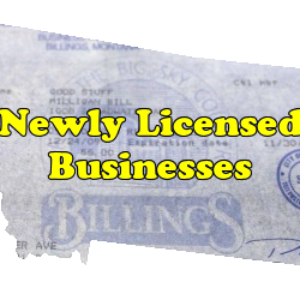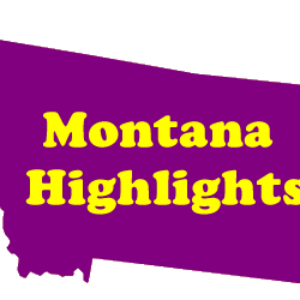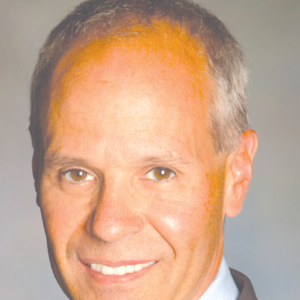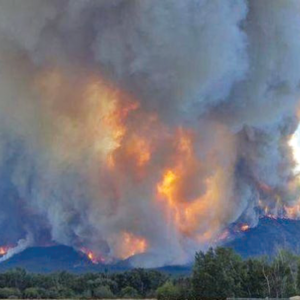Means Cleans LLC, 1965 Lakehills Dr #1, 304-430-9920, William Means, Service
Dan Wobig, 305 S 12th St W, 591-3617, Dan Wobig, service
Elite Garage Door Service and Repair, 3029 Stillwater Dr, 855-9390, Wes Wagner, service
Trident Construction, 423 Kuhlman Dr, 698-7821, Jeremy Austin, general contractors
D Kerner Driver Services, 1706 Canary, 894-0743, Doug Kerner, service
Broadwater Lawn Care, 426 1/2 Broadwater Ave, 208-7008, David Carpenter, service
Garney Companies Inc, 1700 Swift St, Kansas city, MO, 303-791-3600, Joel Heimbuck, general contractors
La Taqueria, 923 12th Ave, Laurel, 702-0662, Miquel Hernandez, restaurants
Radius Contracting LLC, 3057 W Copper Ridge Loop, 855-0094, Thomas Hester, general contractors
Huckleberry Hog, 423 Kuhlman Dr, 971-207-7373, Tina Larsen, restaurants
Holden Excavating LLC, 41 Centennial Rd, Columbus, 321-3040, Carson Holden, service
PCL Construction Inc, 1711 W Greentree Dr #201, Tempe, AZ, 602-799-3586, Scott Tweten, general contractors
Creative Light Wellness, 4152 Iron Horse Trail, 876-3761, Shannon Johnson, service
Emeraldsky Creative, 501 S 44th St W #2310, 272-6205, Johnna Jablonski, retail sales
Guitron Construction LLC, 301 2nd Ave N, Greybull WY, 307-250-1876, Michel Omar/Lopez Guitron, general contractors
Dragoon, 3920 Decathlon Pkwy, 855-5718, Aiden Hansen, roofing contractors
Susan Diekemper, 510 7th St W, 670-7331, Susan Diekemper, service
Mooer Power Digital Assets, 3238 Turnberry Circle, 939-1735, Brandon Mooer, Misc
Revtech LLC, 3125 Laredo Place, 519-9225, Alex Mares, general contractors
Elements Massage, 3420 Central Ave, 245-5100, Corina Zackowski, solo practitioner
Duggins Creation Innovations, 2307 lake Elmo Dr, 940-5497, Trenton Duggins, general contractors
Jagged Edge Yoga, 304 N 29th St, 690-8181, Dodi Hurd, service
BCC Enterprise LLC, 1509 Columbine Dr, 307-751-2883, Chelsea Wiley, service
Montana Dress Co LLC, 2814 2nd Ave N, 969-3777, Barbara Wells, retail sales
Nava Transportation, 143 Broadwater Ave, Sammy Nava, service station
Mt Beach Bum Designs, 304 N 29th St, 690-8181, Dodi Hurd, retail sales
OEM Tech LLC, 1346 Avenue E, 591-8182, Kee Sung Hamblin, service
4DLOCS Shades, 616 1/2 N 24th St, 561-0374, Darius Yellowtail, retail sales
Tracy Construction LLC, 2706 Buffalo Horn Dr, Laurel, 696-9349, general contractors
Dragon Egg Games Billings LLC, 2499 Gabel Rd #4, 702-1241, Fred Mooreier, retail sales
High Noon Vapor LLC, 3202 Henesta Dr Ste K, 839-2191, Daniel Michaelis, retail sales
BW Caring Corporation, 926 Main St Ste 18, Daron Brooker, service
Big Sky Detailing and Cleaning Services, 19 S 28th St, 969-1499, Noah Price, service
Topz Sandwich Co., 320 Main St, 969-1045, Tucker Veltkemp, restaurants
Steady Grinding Coffee House, 2376 Main St, 839-4895, KC Johnson, restaurants
Handcrafted Pride, 3900 Olympic Blvd N104, 200-1258, Emily Sullivan, retail sales
J&J Arborist, 116 Hugh Lillard Ln, Heron MT, 208-610-9014, Joshua Ray, service
Dust Bunny Cleaning, 1212 2nd St W, 200-1386, Keiland Hildebrandt, service
Mammoth Survey Co Inc, 3045 Tamico Dr, 208-4228, Zachary Hassler, service
Out of the Attic, 939 Wicks Ln, 208-5108, Kristie Boelter, retail sales
Custom Contractors Inc, 6830 Pinto Dr, Shepherd, 698-8767, Kevin Wold, general contractors
Austin Construction, 529 Eggebrecht Ln, 591-9806, Austin Specht, general contractors
Evans Construction and Remodel, 1636 Augsburg Dr, 647-3810, James Evans, general contractors
The Chariot Group Inc, 3120 Denali St Ste 1, Anchorage AK, 907-222-5300, Denise Thomas, service
Cannoli Bliss, 300 S 24th St W, 307-752-3581, Marissa Logan/Bliss Cannoli, restaurants
Jodie Bierbach, 2120 22nd St W, 697-1594, Jodie Bierbach, solo practitioner
Diamond Willow Creations, 1420 Avenue B, 561-4251, Raven Volkomener, retail sales
Mongrel Makeovers, 234 Alderson Ave, 598-6148, Tonya Oberg, service
Monkey Rose Boutique LLC, 2120 Constellation Trl, 217-8163, Michaela Leinwand, retail sales
B-Euphoric Coaching LLC, 30 24th St W #201, 794-8385, Bri Burt, service
NO H2O LLC, 919 Lake Elmo Dr, 661-0518, Anna & Mark Yepez, service
Pettus Plumbing and Piping, 12647 Hwy 72 W, Rogerville AL, 256-389-9191, Tony Robertson/Grover Johnson, general contractors
Ridgeway Esthetics, 2001 Rosebud Dr Ste D, 208-8411, Sara Ridgeway, service
Laurie Neubauer, 142 Avenue B, 661-2965, Laurie Neubauer, service
El Concrete Company, 327 Old Divide Rd, Roundup, 428-8040, Cary Olson, general contractors
Michael Crowley, 1702 Dickie Rd Trl 5, 861-2810, Michael Crowley, general contractors
Brothers Billiards, 1442 Main St, 855-0464, Todd Krum, retail sales
Parlour 406, 2701 1st Ave N Ste 200, 534-0647, Sonja Roy, service
Bauer’s Handyman Service, 5 Piccolo Ln, 702-6206, Phillip Bauer, general contractors
Heidi Betz, 127 S 12th St W, 591-0562, Heidi Betz, service
OPA Grill,907 Copper Valley Cir, 794-9771, Nicole Grovijahn & Brandon Raw, Restaurants
All State Sign Group, Inc., 5907 2nd Ave N, Great Falls, 899-1042, Raean Bilbey, service
Second Nature Consulting LLC, 1432 Teton Ave, 850-0461, Neil Kiner, architect
P Thomas Smith Counseling, 320 Nesting Pl, 647-3490, Thomas Smith, service
The Rice Shack, 21 S 26th St, 206-351-3664, Jeremy Eide, restaurants
Big Sky Lumber Import LLC, 3295 Granger Ave E, 861-6189, Vahid Haguerdiev, office only
TDS MetroCom LLC, 2621 Hoffman Ave #3, 608-516-1702, Doug Haselwander, service
Treasure State Air duct Cleaning LLC, 2925 Chapman Ln, 696-3656, William Jaksha, service
Holdem LLC, 3319 Rimrock Rd, 850-4331, Joshua Tolentino, service
Foldem LLC, 3319 Rimrock Rd, 850-4331, Joshua Tolentino, real estate rental
Jo Smith, 2215 Broadwater Ave, 672-3913, Jo Lynne Smith, solo practitioner
Old School Welding, 3032 Saddleback Trl, 690-9068, Joseph & Joseph Jr Malchuski, service
JR Fuller Construction LLC, 204 Foundation Ave, Laurel, 876-0262, Justin Fuller, general contractors
Circle W Construction, 3950 Belmont Rd, 696-7487, Jeff Wickham, general contractors
Kostelecky’s Painting Service, 573 Acorn Pl, 661-4272, Brandon Kostelecky, service
S&J Electric Inc, 2780 Fairgrounds Rd, 208-226-2450, Kyann Philips, electrical contractors
Michael Day, 1500 Poly Dr Ste 130, 969-1145, Michael Day, service
A Village Home Care, 100 N 27th St Ste 600-C, 413-8519, Maggie Houston, service
LI’s Foot massage and Foot Soak, 1915 Broadwater Ave, 200-7130, Li Yao, service
Breton Avenir Construction Services Inc, 14724 Pleasant Valley Rd, Chillicothe OH, 614-530-4723, Jeff Butler, general contractors
Pro Communications LLC, 4513 RD 3 NE, Moses Lake WA, Paul Volkmar, service
The Bow Shop, 10 Miners Place Apt 2, 853-0150, Jarrett Gunther/Ridge Karr, service
Evedone Bookkeeping, 253 Windsor Cir S, 281-3068, Evelyn Amponsah, misc
Bailey & Sons Construction, 1232 Avenue D, 580-414-0083, Kenneth bailey, general contractors
Backbone Builders, 2156 Pueblo Dr, 413-0724, Kellen Backbone, general contractors
Masters Massage, 1124 16th St W Ste 6, 534-8760, Tracy Masters, solo practitioner
Educational Furnishings of Arizona LLC, 6913 W Buckeye Rd Ste 200, Phoenix AZ, 602-484-7331, Claudia Sillman, retail sales
Ashely Zubick, 4130 Buchanan Ave, 647-3689, Ashely Zubick, solo practitioner
Top Notch Independent Contractors, 580 Chinook Pl, 696-7703, Devin Miller, general contractors
Blount Construction and Development Inc, 5646 Hesper Rd, 698-6170, Chris Blount, service
Griffin Construction, 80 Stringari Ln, Belfry, 698-9550, William Griffin, general contractors
Extravaganza Cleaning LLC, 4042 Chamberlain Dr, 561-9221, Tina Kester, service
Errol G Seiffert, 2823 6th Ave N 315, 647-4813, Errol Seiffert, service
Campfire Blend Coffee Co, 4152 Iron Horse Trl, 876-3761, Shannon Johnson, retail sales





